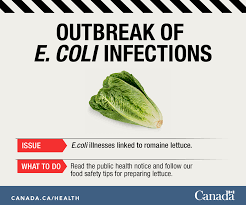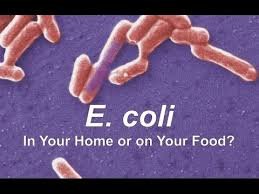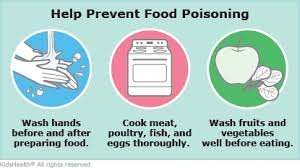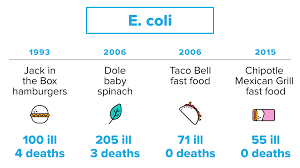
As you’ve probably heard, in recent weeks, 60 people have become ill and two have died after eating romaine lettuce contaminated with Escherichia coli (E. coli). Based on new information, the Centers for Disease Control and Prevention (CDC) expanded its advisory for consumers to discard any romaine lettuce unless they have proof it wasn’t grown around Yuma, AZ. This includes heads and hearts of romaine, as well as bagged or boxed mixed salad greens that contain romaine.
Consumer Reports has gone a step further, recommending that people avoid all romaine lettuce due to the infeasibility of figuring out where it was produced.
Washing is not an effective method for removing bacteria from leafy vegetables, according to a study published in Food, Science & Nutrition. After researchers washed romaine lettuce and a prepared mixed salad, high levels of bacteria remained, which can pose a health risk under certain conditions. Moreover, Consumer Reports warns that organic lettuce doesn’t offer protection because it can also be affected by E. coli outbreaks.
The current E. coli infection plaguing the country can be avoided by staying away from romaine lettuce. However, since we never know when an outbreak affecting another food may occur, it’s good to be aware of the cause and symptoms, as well as treatment and prevention measures.

The Cause of E. Coli
E. coli is commonly found in the guts of humans and animals, but most strains don’t produce illness unless they spread outside of the intestines. People can contract the infections when they touch or eat food that has been contaminated with human and animal wastes. Such foods include raw fruits and vegetables, unpasteurized milk and raw or undercooked meat.
Symptoms of E. Coli
Early symptoms usually develop between three to five days after exposure to the bacteria, but they can occasionally occur as early as a day or as late as ten days. These include the following:
- Vomiting
- Nausea
- Diarrhea
- Stomach cramps
- Fever
- Loss of appetite
- Malaise
- Mild dehydration
Most people recover without treatment at home within five to seven days, but approximately 10 percent develop the more severe symptoms and require hospitalization. Children and the elderly are particularly at risk. In these cases, the sufferers manifest the early symptoms, but they persist longer than a week. At this point, the later symptoms below may appear, some of which are life threatening:

- Anemia
- Bloody diarrhea
- Severe abdominal pain
- Pale skin
- Nosebleeds
- Easy bruising
- Severe dehydration
- Shortness of breath
- Fatigue
- Little or no urine output
- Seizures
- Jaundice
- Kidney failure
- General swelling
- Excessive bleeding
- Mental changes
- Death
Treating E. Coli
Mild cases are treated with rest and forced fluids to prevent dehydration. If you suspect that you have been infected, drink plenty of water and perhaps chicken broth and juices to replenish electrolytes.Contact your doctor if you have bloody diarrhea, severe vomiting or if your diarrhea lasts longer than three days. Complicated cases may require treatment in an intensive care unit that includes intravenous fluids, kidney dialysis, kidney transplant, blood transfusions and treatments for high blood pressure and seizures.

E. Coli Prevention
The CDC recommends the following preventive measures:
- Wash hands well after using the restroom and changing diapers and before cooking or eating.
- Cook meat to at least a temperature of 160°.
- Avoid unpasteurized juices and dairy products like milk or yogurt.
- Don’t swallow water when swimming.
- In cooking, prevent cross contamination by thoroughly washing cutting boards, utensils, counters and hands after touching raw meat
By Mary West
http://www.liveinthenow.com/article/e-coli-symptoms-and-what-to-do-if-you-think-you-have-it
What is the origin of this dish? It looks tasy AF. I'd love to wash it down with a Witbier. I think the two who complement each other very nicely.
Downvoting a post can decrease pending rewards and make it less visible. Common reasons:
Submit